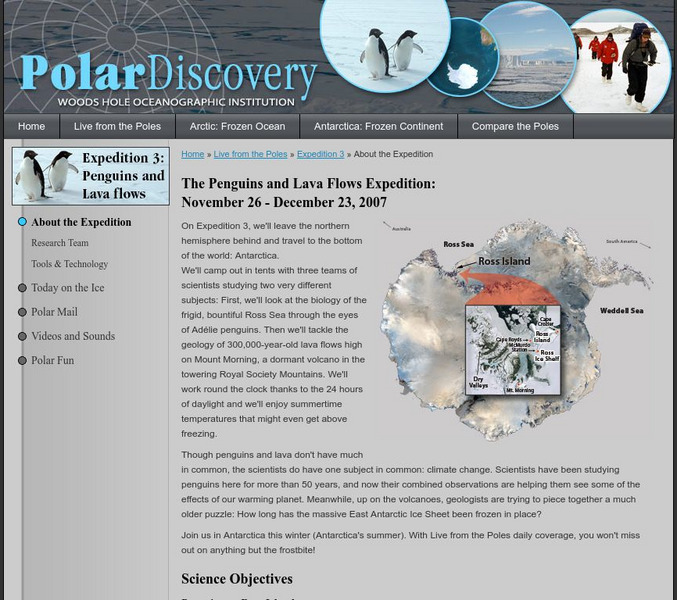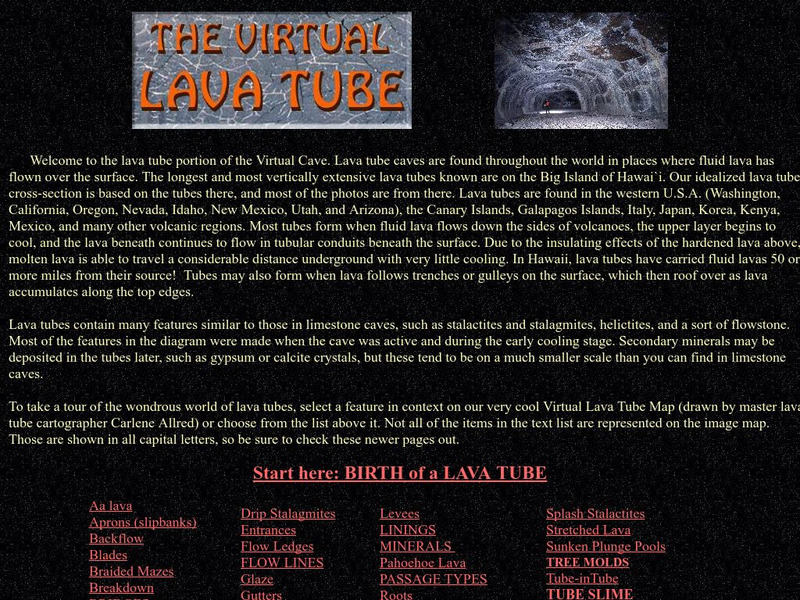Hi, what do you want to do?
Curated OER
Introduction to Volcanoes
Students develop a basic understanding of volcanoes. They watch a PowerPoint Presentation which introduces three types of volcanoes: shield volcanoes, cinder cones, and composite volcanoes.
Curated OER
Integrating Physical Science and the Geological Environment
Students undertake a series of experiments and activities related to geology, especially in Connecticut. They evaluate types of rocks, minerals, and crystals, exploring the main concepts of geology.
Curated OER
Earthquakes & Volcanoes
In this earthquake and volcano instructional activity, students use the Internet site given to complete each of the questions. They identify and describe various major earthquakes that have occurred in the US. Then they describe where...
Curated OER
Forces in Earth
In this Earth's forces worksheet, students will review the characteristics of earthquakes, including types of faults. Students will interpret a seismograph read-out from an earthquake. Students will complete 10 fill in the blank...
Curated OER
Igneous and Sedimentary Rocks
In this igneous and sedimentary rocks learning exercise, students will review 8 vocabulary words associated with the characteristics and types of igneous and sedimentary rocks. Then students will group the vocabulary words into two groups.
Curated OER
Volcanoes and Urban Planning
Young scholars analyze satellite image data of Volcan Villarica. In this earth science activity, students identify dangerous areas surrounding the volcano. They propose a new safe location for the town.
Curated OER
Dark and Beautiful Caves
Learners research how caves form. They describe the major stone formations in caves by taking notes. They construct a clay model of a cave and mark each formation making it easy to identify in the legend.
Curated OER
How Does Your Magma Grow?
Students identify the three types of plate boundaries and the Earth's tectonic plates system. They examine how the Galapagos Islands were formed and hydrothermal vents.
Curated OER
The Rifting of Pangaea and the Gettysburg Battlefield
Eleventh graders analyze and interpret an animated model of Earth’s rifting processes. In this Earth Science lesson, 11th graders connect Earth’s rifting processes with the Earth’s surface in the Gettysburg battlefield. ...
Curated OER
Volcano
Students research major volcanic eruptions. In this Earth science lesson, students take on the role of vulcanologist writing reports to the President of the United States on how to respond to a volcanic disaster. This lesson includes...
Curated OER
Reading the Shapes of Volcanoes on Earth and Mars
Students compare and contrast the volcanoes of Earth and Mars, and examine specific volcanoes on Mars. They model the processes that create cone and shield volcanoes, and measure the slope angles of cone and shield volcanoes.
Curated OER
And Now for Something Completely Different...
Students identify organisms that are typical a part of a hydrothermal vent. They examine why hydrothermal vents are short-lived.
Curated OER
Where Did They Come From?
Students explain hydrothermal vents and the process in which species and the hydrothermal vents become isolated.
Curated OER
Rock Families
Students study the three types of rock characteristics; igneous, sedimentary, and metamorphic. They are divided into three groups and each group takes one of the rock characteristics. They then act out the characteristics of their rock...
Science Education Resource Center at Carleton College
Serc: Investigating Lava Flows and Their Imapct on Shoreline Features
In this field geology activity, students will explore basaltic lava flows along the shoreline of Lake Superior, and begin to gain an understanding of the geologic story of Minnesota's North Shore. They will make observations about...
US Geological Survey
Cvo: Magma, Lava, and Lava Flows
Site delves into magma, lava and lava flows. Provides numerous links for additional references.
TeachEngineering
Teach Engineering: How Far Does a Lava Flow Go?
While learning about volcanoes, magma and lava flows, students learn about the properties of liquid movement, coming to understand viscosity and other factors that increase and decrease liquid flow. They also learn about lava composition...
TeachEngineering
Teach Engineering: Measuring Lava Flow
Students learn how volume, viscosity and slope are factors that affect the surface area that lava covers. Using clear transparency grids and liquid soap, students conduct experiments, make measurements and collect data. They also...
Woods Hole Oceanographic Institution
Polar Discovery: Live From the Poles: Exp 3: The Penguins and Lava Flows
Travel on an expedition to Antarctica to see the Ross Sea through the eyes of Adelie penguins, and then discover the geology of 300,000-year-old lava flows high on Mount Morning.
Science Education Resource Center at Carleton College
Serc: Bot Ec: Rate of Lava Flow
In 1983, an eruption began at Kilauea Volcano in Hawaii that has proved to be the largest and longest-lived eruption since records began in 1823. Lava has poured out of the volcano at an average rate of about 160 million m3 per year. To...
Woods Hole Oceanographic Institution
Woods Hole Oceanography Institute: Hot Topics: Lava Flows
How long does it take a volcano to grow? What are the different types of lava? What's a lava tube? All of these questions are addressed by this resource.
PBS
Pbs Learning Media: Volcanic Features
This interactive resource adapted from the National Park Service illustrates the variety of landforms and features created by volcanoes. Featured are calderas, craters, fumaroles and other geothermal features, igneous rocks, lava flows,...
Curated OER
Science Kids: Science Images: Lava Flow
A close up photo of a lava flow as it makes its way from a volcano crater after a recent eruption.
Other
Goodearth Graphics: The Virtual Lava Tube
Explore this photo archive from Goodearth Graphics to learn more about lava formations and effects.

























